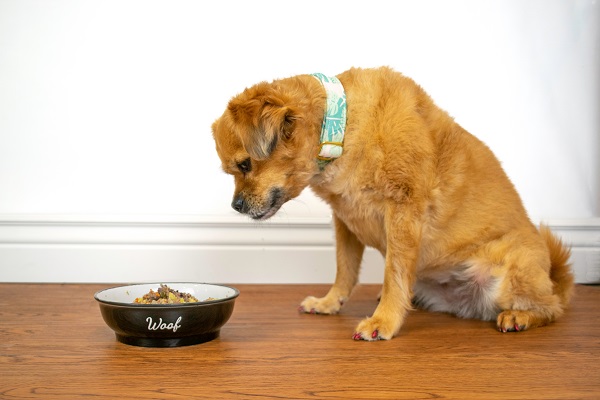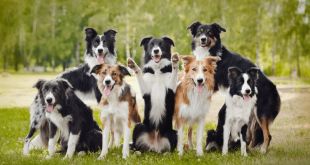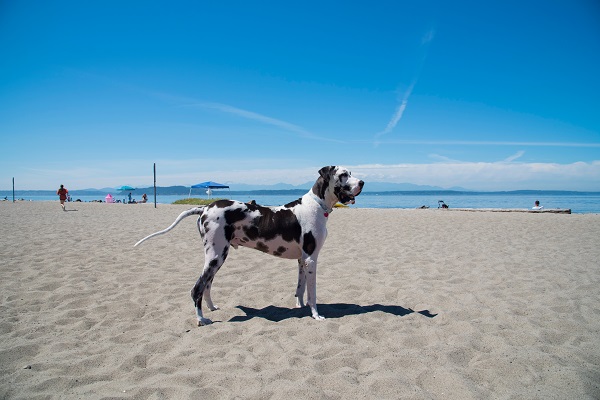Dogs are a lot like other pets. They can be territorial, especially so when they are having their meals. Food aggression can lead dogs to aggressive behavior, such as being extra protective of their food. There are a few reasons for such an issue in your pet. Some dogs are dominant, and some are anxious.
These are some possible reasons why dogs show aggression towards other animals, pets, and people. If you live with such a dog, there remains a possibility that you could get bitten, making your pup possessive in other walks of their life. There are several ways you could treat food aggression in your puppies.
What is food aggression in dogs?
Food aggression can be a “territorial reaction.” A dog experiences such reactions when having treats or meals. They use hostile behavior so that they can guard their food. Food aggression is common in dogs.
One study has shown that almost 20% of all dogs exhibit certain signs of food aggression. This aggression can be a way of guarding their resources. This behavior has been passed down to them through evolution, returning to when dogs needed to protect every resource they had, including their meals.
What are the causes of dog food aggression?
There is not one definite reason as such of food aggression among dogs. However, there are some common reasons, such as they may have learned it when they were puppies. It may have been due to accidental training practices or because they felt the need to compete because the shelter environment where the dogs were initially brought up had a scarcity of such resources.
Dogs may develop food aggression later on in their lives too. Some dog breeds tend to be genetically predisposed to aggressive or dominant behavioral tendencies. Hence, they might guard their food as part of their pack mentality.
What are the signs of dog food aggression?
There are several signs to identify if your dog is showing food aggression. These signs can be categorized as mild, moderate, and severe.
- A mild degree of food aggression is recognized best by verbal signs.
- A moderate degree of food aggression is when a dog snaps or lunges at other dogs and people who approach them at this time.
- Severe signs of food aggression can lead to dangerous circumstances for other pets and people, as the dogs chase or bite the perceived threats.
Freezing, tensing, staring, snarling, chasing, and biting are signs of aggression that you must watch out for in your pets.
How to stop the food aggression of your dog?
Is your dog showing any of these signs? In that case, you may rest assured as such defensive behavior can be prevented and managed.
The first thing to remember is to neuter or spay your dog. Hormones tend to be a reason dogs become aggressive. Hence, neutering and spaying could reduce these tendencies among them.
Another treatment option that you can take in this case is treatment. If your dog has food aggression, you can put them through a training sequence.
It would be laid out in seven stages focusing on counterconditioning and desensitization.
Getting them used to your presence while eating
In this step, you focus on getting acquainted with your dog with your presence when they are having their treats or eating. Stand back a few feet from your dog while they are eating food from their bowl on the floor. The goal is to have your dog eat relaxed for at least 10 straight meals before you move on to the next stage in this training process.
Adding a tasty treat and then stepping back
Here you have to build off the first step by adding a tasty treat to their bowl and immediately stepping back to the earlier distance after you have put the treat in the bowl. Remember that consistency is the most important factor over here. Each day, maintain a goal of moving forward by a step. Once you can stand within two feet of your dog after placing the treat for 10 meals consecutively, your baby is ready to progress to the next stage.
Standing close and talking to your dog
In this step, the focus is on conversation and proximity. When your dog is eating from their bowl, you must stand next to them and provide them with a certain treat. Speak to them as if you are conversing with them. You can ask them about what they are eating or the specific treatment.
Both are good options for keeping your dog calm. Turn and walk away from your pup after giving them the treat, and repeat this process after a gap of a few seconds each. You can move on to the next stage if your dog remains relaxed for 10 meals.
Trying feeding by hand
Hand feeding is a significant part of this entire process as such. Your dog must understand that you do not threaten their food when they are eating. Start by approaching your pup and conversing with them – it would be similar to the previous stage. Stand next to their bowl and hold your hand out with a treat for them. Rather than putting it in the bowl, encourage them to have it from your hand.
Touching their bowl but not taking food from it
This stage is pretty similar to the last one, with the only exception being that this time you stay close to your dog when they take the treat from you. Try speaking to them casually and offer the treat using one of your hands. Now use the other one to touch their bowl but do not take any food from it.
This will assist your dog in becoming accustomed to your presence close to them when they are eating. If your dog is relaxed for 10 meals straight in this exercise, move on to the next stage.
Lifting their bowl off the ground to give them the treat
As far as trust-building goes, this is a massive stage. Because you would lift their bowl off the ground to place the treat in it. Speak calmly to your dog while you pick up its bowl. First, lift it 6 to 12 inches off the ground, put the treat, and set the bowl back down. Every day, you must aim to take the bowl higher.
FAQs
Is it possible to cure food aggression in dogs?
If your dog suffers from severe food aggression, the veterinarian might suggest some medications to control their reaction. Medicines will help reduce the anxiety level of your dog that causes them to behave in such a way.
How can I stop my dog from guarding its food?
You can offer your dog a better item before attempting to take away what they are already having. Try dropping several treats on the ground far from your dog is eating.
What is the best way to stop an aggressive dog?
The most effective and safest way to treat the problem of aggression in dogs is to implement behavior modification.
Why do dogs become aggressive over their food?
In a pack of dogs, alphas show food aggression to assert dominance over others, while the other dogs do it out of fear and anxiety.
What are the signs of severe food aggression in dogs?
If a dog is severely aggressive over their food, it would stiffen their bodies, show its teeth, growl, bite, or snap when anyone else – people or animals – approaches them while eating.
Conclusion
In the final step, you have to repeat the process, the first six steps we have described above, to be precise, with the other members of the family. Even as your dog starts trusting the other people in the household around their food, they start showing much fewer signs of food aggression – in fact, it may also cease to exist in time.
However, please note while your pup may be comfortable eating with you around them, they may not be so with the other people in the house and the guests. In that case, create a safe environment for them to eat.

 DogExpress
DogExpress


















 in Chandigarh, India.
in Chandigarh, India. 
